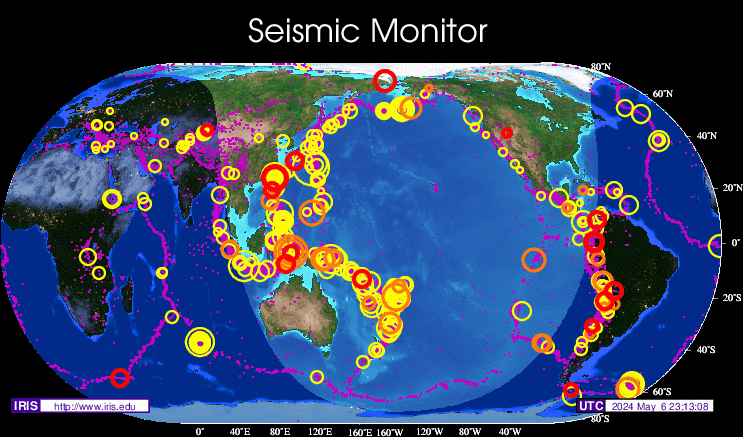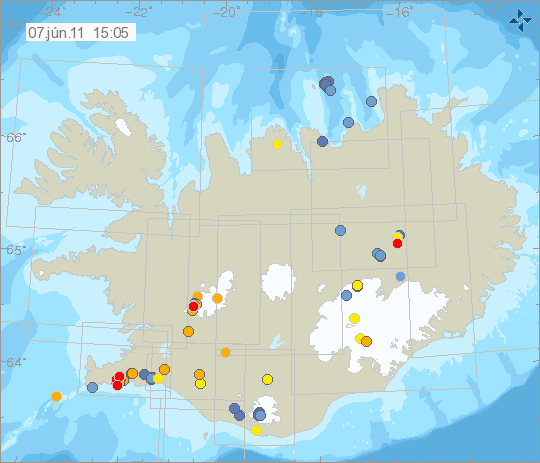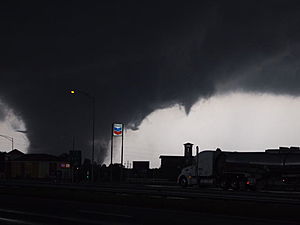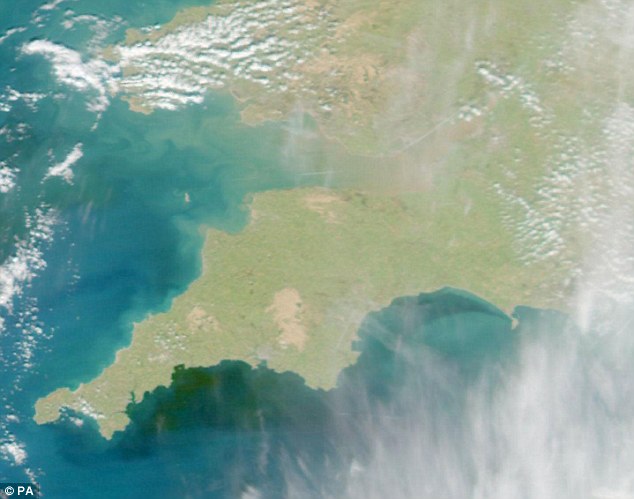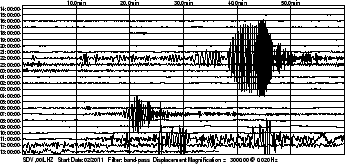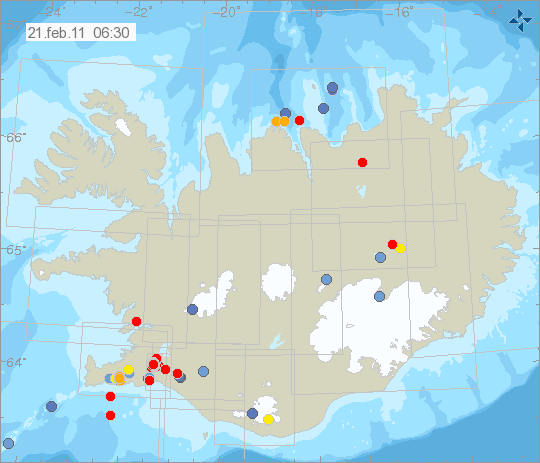
Floods hit South Philippines; 20 Dead, 13 missing, thousands displaced
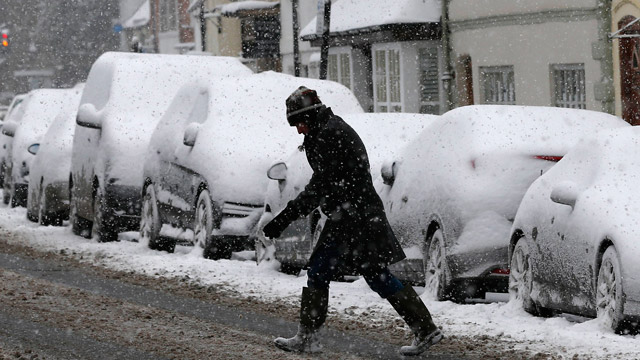
Climate Chaos: Killer winter storms predicted to impact UK for next 30 years
Winter blast rewrites Oregon history: The record cold temperatures throughout Oregon continues to rewrite the history books, or at least add new chapters to them. The city of Portland has not had a day with temperatures in the single digits since 1989 — a quarter-century ago. KOIN 6 News meteorologist Sally Showman said Portland stands a good chance of dropping into the single digits early Sunday morning. The high in the city on Saturday was only 30, the third day in a row with highs in the 30s. Sunday will also be cold, and the record low for December 8 is 8 degrees, set in 1972. The city of Portland opened up warming shelters for people to stay warm and keep warm. But the biggest problem is there is not enough space. JD Dilts is one of the people living on the streets since he lost his job. He’s thankful for the help of the Red Cross. “Man, it’s cold,” he said. “You take you gloves off your hands hurt.” That city-funded center helps hundreds of people stay warm, but it can only open when the temperature dips below 25. “It’s 26 degrees. When you start getting in the 30s, that’s cold,” Dilts said. Will Harris is the associate director of JOIN, a non-profit organization that helps people get back on their feet. He and others have been out helping people stay warm. “The main job is to keep them alive. We’ve been out the last six days helping people get the gear they need,” he said. “If they don’t, we will make sure they do.” Donations are necessary — blankets, coats, other winter items. Call 211 for more information on a drop center. –KOIN
Summer snow in Australia: This is just the beginning. The really cold air and the really heavy snow is due later in the day, but snow is already falling today across the high country of New South Wales and Victoria. And yes, it’s December 5. The fifth day of summer. Your calendar is not wrong. Snow is not a freak event in southern Australia in the warmer months. A small dusting usually appears on the higher parts of the Australian Alps at least once each summer. –News

Day of Death: 50 tornadoes tear through U.S. Midwest, leaving 5 dead
Emergency workers arrived at a neighborhood in Illinois after tornadoes touched down to find scenes eerily reminiscent of the destruction seen in the Philippines after Typhoon Haiyan made landfall.
November 18, 2013 – ILLINOIS – A fast-moving storm system triggered multiple tornadoes on Sunday, killing at least five people, injuring about 40 and flattening large parts of the city of Washington, Illinois as it tore across the Midwest, officials said. The storm also forced the Chicago Bears to halt their game against the Baltimore Ravens and encourage fans at Soldier Field to seek shelter as menacing clouds rolled in. Chicago’s two major airports also briefly stopped traffic with the metropolitan area was under a tornado watch. The city of Washington, Illinois, was hit especially hard by what the National Weather Service called a ‘large and extremely dangerous tornado. “It’s a sad day in Washington. The devastation is just unbelievable. You just can’t imagine. It looks like a war zone in our community,” said Washington Mayor Gary Manier. “It’s kind of widespread and went right through our community of 15,000 people,” he added, saying hundreds of homes in the town, 145 miles southwest of Chicago, had been destroyed. The state Emergency Management Agency said one person was killed in Washington. Thirty-one people injured by the storm were being treated at St. Francis Medical Center, one of the main hospitals in nearby Peoria, according to hospital spokeswoman Amy Paul. Eight had traumatic injuries.
Two people were killed in Washington County, Illinois, about 200 miles south of Peoria, said Illinois Emergency Management Agency spokeswoman Patti Thompson. The agency estimated that hundreds of homes were damaged and at least 70 leveled across the state. Washington County coroner Mark Styninger said the two people who died there were elderly siblings. The 80-year-old man and his 78-year-old sister suffered massive trauma when their home was demolished in the storm, Styninger said. Two people were killed in Massac County, Illinois, on the Kentucky border where a twister devastated several neighborhoods, emergency officials said. “It wiped out homes, mobile homes,” said Charles Taylor, deputy director of the Emergency Services and Disaster Agency in Massac County. “It downed trees, power lines. We have gas leaks, numerous injuries whether they were in mobile homes, or outdoors, even in the motor vehicles, people have been trapped.” “We have reports of homes being flattened, roofs being torn off,” Sara Sparkman, a spokeswoman for the health department of Tazewell County, Illinois, where Washington is located, said in a telephone interview. “We have actual whole neighborhoods being demolished by the storm.” Sparkman said the storm also had caused damage in Pekin, south of Peoria.
Illinois State Police spokeswoman Monique Bond said mobile homes were toppled, roofs torn from homes, and trees uprooted. She said officials believe some people may be trapped in their basements under debris. The American Red Cross worked with emergency management officials to set up shelters and provide assistance to displaced residents, even as rescue workers searched for more people who might have been caught and trapped in the storm’s path. The Washington tornado came out of a fast-moving storm system that originally headed toward Chicago as it threatened a large swath of the Midwest with dangerous winds, thunderstorms and hail, U.S. weather officials said. The National Weather Services’ Storm Prediction Center said the storm moved dangerously fast, tracking eastward at 60 miles per hour. This storm system had some similarities to the fast-moving “derecho” storm that knocked out power to more than 4.2 million people and killed 22 in the Midwest and Mid-Atlantic regions in June 2012, according to Bill Bunting, forecast branch chief at the Storm Prediction Center. According to news affiliate KIII TV3, the storm system may have unleashed as many as 50 twisters. –Reuters KIII TV3

Philippine typhoon kills at least 10,000: survivors ‘walking around like zombies’
November 10, 2013 – TACLOBAN, Philippines - One of the most powerful storms ever recorded killed at least 10,000 people in the central Philippines, a senior police official said on Sunday, with huge waves sweeping away entire coastal villages and devastating the region’s main city. Super typhoon Haiyan destroyed about 70 to 80 percent of the area in its path as it tore through Leyte province on Friday, said police chief superintendent Elmer Soria. As rescue workers struggled to reach ravaged villages along the coast, where the death toll is as yet unknown, survivors foraged for food as supplies dwindled or searched for lost loved ones. “People are walking like zombies looking for food,” said Jenny Chu, a medical student in Leyte. “It’s like a movie.” Most of the deaths appear to have been caused by surging sea water strewn with debris that many said resembled a tsunami, leveling houses and drowning hundreds of people in one of the worst natural disasters to hit the typhoon-prone Southeast Asian nation.
The national government and disaster agency have not confirmed the latest estimate of deaths, a sharp increase from initial estimates on Saturday of at least 1,000 killed by a storm whose sustained winds reached 195 miles per hour (313 km per hour) with gusts of up to 235 mph (378 kph). “We had a meeting last night with the governor and the other officials. The governor said, based on their estimate, 10,000 died.” Soria said. “The devastation is so big.” More than 330,900 people were displaced and 4.3 million “affected” by the typhoon in 36 provinces, the UN’s humanitarian agency said, as relief agencies called for food, water and tarpaulins for the homeless. Witnesses and officials described chaotic scenes in Leyte’s capital, Tacloban, a coastal city of 220,000 about 580 km (360 miles) southeast of Manila, with hundreds of bodies piled on the sides of roads and pinned under wrecked houses. The city lies in a cove where the seawater narrows, making it susceptible to storm surges. The city and nearby villages as far as one kilometer (just over half a mile) from shore were flooded, leaving floating bodies and roads choked with debris from fallen trees, tangled power lines and flattened homes. TV footage showed children clinging to rooftops for their lives.
‘It was like the end of the world.’ – Many internet users urged prayers and called for aid for survivors in the largely Roman Catholic nation on social media sites such as Twitter. “From a helicopter, you can see the extent of devastation. From the shore and moving a kilometer inland, there are no structures standing. It was like a tsunami,” said interior secretary Manuel Roxas, who had been in Tacloban since before the typhoon struck the city. “I don’t know how to describe what I saw. It’s horrific.” The UN’s Office for the Coordination of Humanitarian Affairs said aerial surveys showed “significant damage to coastal areas with heavy ships thrown to the shore, many houses destroyed and vast tracts of agricultural land decimated.” The destruction extended well beyond Tacloban. Officials had yet to make contact with Guiuan, a town of 40,000 that was first hit by the typhoon. Baco, a city of 35,000 people in Oriental Mindoro province, was 80 percent under water, the UN said. Six people were killed and dozens wounded during heavy winds and storms in central Vietnam as Haiyan approached the coast, state media reported, even though it had weakened substantially since hitting the Philippines. Vietnam authorities have moved 883,000 people in 11 central provinces to safe zones, according to the government’s website. Despite weakening, the storm is likely to cause heavy rains, flooding, strong winds and mudslides, as it makes its way north in the South China Sea.

Category 4 Tropical Cyclone Phailin makes landfall in India: 500,000 evacuated
October 12, 2013 – INDIA – As many as 500,000 people in India have been evacuated as a massive cyclone sweeps through the Bay of Bengal towards the east coast. Cyclone Phailin, categorized as “very severe” by weather forecasters, is expected to hit Orissa and Andhra Pradesh states on Saturday evening. The Meteorological Department has predicted the storm will bring winds of up to 220km/h (136mph). A super-cyclone in 1999 killed more than 10,000 people in Orissa. But officials say this time they are better prepared, the BBC’s Sanjoy Majumder in Orissa reports. Officials said Cyclone Phailin was expected to make landfall close to the city of Gopalpur (Orissa state), bringing a storm surge of at least 3m (10ft) that was likely to cause “extensive damage” to mud houses on the coast. “No-one will be allowed to stay in mud and thatched houses in the coastal areas,” said Orissa’s Disaster Management Minister Surya Narayan Patra. The army is on standby in the two states for emergency and relief operations. Officials said helicopters and food packages were ready to be dropped in the storm-affected areas. Meanwhile, the US Navy’s Joint Typhoon Warning Centre predicted that Phailin could produce gusts of up to 296km/h (184 mph), while the London-based Tropical Storm Risk classified Phailin as a Category Five storm – the most powerful. Janmejay Mohapatra, a resident of Orissa state capital Bhubaneswar, said it was too dangerous to go out now, as trees were down and debris was flying everywhere. Cyclone Phailin is expected to be the biggest storm to hit the region for 14 years. “Already the rain is very heavy and the wind is gusting at 100-120km an hour,” he told the BBC. “The phone lines are down where I am and we have no electricity.” –BBC

Scotland experiences four seasons in a day: lashed by 100 mph wind gusts
September 16, 2013 – SCOTLAND - Scotland experienced all four seasons in one day yesterday, as the first storm of autumn swept across the country, bringing chaos to the country’s roads. Torrential rain, accompanied by gale-force winds, gave way to sunny periods, before the wet weather returned. The Cairngorms were hit by gusts of 100 mph, with snow anticipated last night, and the Forth Road Bridge was closed to high-sided vehicles after wind speeds of 69 mph were recorded. However, not everyone was bemoaning the gales. The weather was perfect for Scottish Windfest, at Barassie Beach in Troon, where windsurfers and kitesurfers were competing. Last night, the Met Office issued a blanket “yellow” warning, forecasting blustery winds continuing into today. They said high-altitude jetstream winds from the Atlantic pushing 200 mph – almost twice the usual – triggered the storm. It brought torrential rain yesterday morning, which flooded Nitshill Road and Thornliebank Road, in the south of Glasgow, with motorists in Dumfries suffering the worst driving conditions in the country with heavy spray on main roads.
The weather also caused severe disruption to Caledonian MacBrayne’s ferry timetable on the west coast, where dozens of sailings were either delayed or cancelled. Worst affected were the routes between Oban, Coll and Tiree, the new link between Ardrossan and Campbeltown, and the Tarbert to Portavadie crossing. A spokesman for Cal Mac said: “Ferry services across the network have been badly affected by high winds. “The bad weather is expected to continue into Monday and ferry travellers are advised to check our website (www.calmac.co.uk) for the latest information. Traffic Scotland warned motorists of high winds on the Skye, Friarton, Tay and Erskine bridges. And there was rail disruption on west coast northbound routes, after a tree fell on to overhead lines between Lockerbie and Carstairs. The Scottish Environment Protection Agency (Sepa) issued flood warnings in Ayrshire and Arran, Dumfries and Galloway and west central Scotland. The CairnGorm funicular railway was closed all morning yesterday as 100mph winds blasted the area, but it was opened by midday. Paul Nixon, CairnGorm’s customer manager, said: “We’ve just been keeping a close eye on the weather today, making sure that visitors can come back down. “We’re expecting some snow tonight, but it’s unlikely to lie and will be restricted to the very top of the mountain. “This sort of weather usually does mark the start of winter for us really. In the past there has been skiing in October, and people are anticipating a very good season.” Tom Morgan, of the Met Office, said: “Scotland is only half-way there with the severe wind problems. –The Scotsman[/center]
Last edited by Carol on Wed Jan 15, 2014 9:53 am; edited 255 times in total













